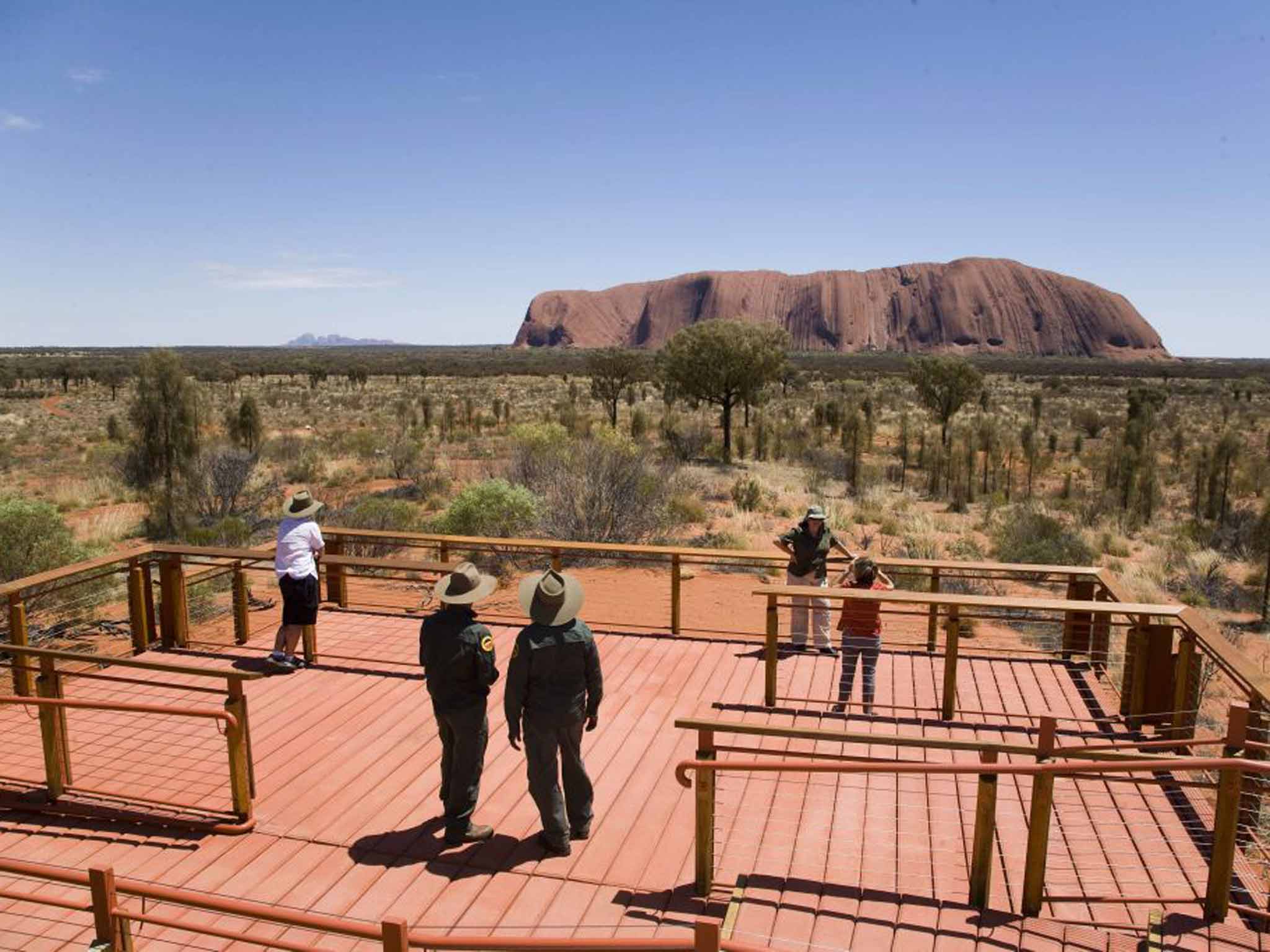Slap bang in the middle of Australia sits Alice Springs, in the heart of nowhere. Stare from the telegraph station - the reason Alice exists, as an early point of communication between settler outposts - and you can feel the silence, a thunderous hush rolling in across the ripple of the MacDonnell Ranges.
In the streets - a modest noughts and crosses grid of small motels, a single shopping mall and post office - tourists scout for things to do, browsing the opal shops, galleries, pubs, staring at huddles of Arrernte people and snapping them surreptitiously.
"The Alice", as locals call it, feels footloose and makeshift, somewhere you come to in order to leave. "Don’t miss the Olgas mate, or Ayers Rock," says Russ, an ex-miner, tipping his pint at the bar of Bojangles, an Alice saloon.
The town has long ago shed its hell-raising reputation as a watering hole for cattle drovers and women of dubious virtue. My agenda involves meeting neither. Like thousands of others who pass through this town, I am a fly-bynight chasing a dream, here to see and feel and smell Australia’s red heartland, and in particular that improbable lump of rock, known properly as Uluru.
Top 10 destinations for 2015
Show all 10A new, better vantage point - a mile or so closer to Uluru than the original - opened south-east of the landmark a few years ago to provide a different perspective from the usual postcard view. "See it at sunrise," I’d been advised. "The colours are rainbow-like, ever changing." I was intrigued.
I rise before dawn to catch Wayoutback Desert Safari’s 4x4 on a three-day round-trip, including two nights in canvas swag bags under the stars. The pitch black sky dissolves into dawn as I and my dozen fellow travellers barrel through dust along the Stuart Highway, leaving "the Alice" far behind. We stop for a comfort break at a way-station, where we eat a quick-grab sandwich of lettuce and beetroot, and stare at camels caged in a compound.
The hours start to grind. Once the novelty of spinifex grass, dried river beds and boulders has lost its allure, we gaze at a cloud like a lonely Zeppelin pinned to blue sky. Nothing passes in either direction. Paul Mackay, our driver-guide, explains that after lunch we’ll explore King’s Canyon and climb to the rim trail. "But first we need wood to make tonight’s fire." We lurch to a halt.
Close to the road is a zig-zag Salvador Dali-landscape of barelimbed trees. Their branches snap like a volley of rifle fire as we break them. Then out of nowhere thousands of flies arrive, crawling over us, making us spit. We work in a frenzy. Paul tethers the wood to the bus’s roof and revs the engine. Kings Canyon is hot by 1pm. We eat near the creek beside the car park, making jokes. "Yum. Flies in the fruit cake," says Yana, one of my companions. "All nice protein. Good for energy." We need it.
The climb to the rim leaves us gasping and gaping, stopped in our tracks, wide-eyed at the chasm that plunges through the honeycombed maw of cliffs that drop straight below us. All afternoon, as we trek the rim, I imagine the lives of the first European explorers, staring out at the vast unknown of endless desert now crisscrossed by dirt roads.
It somehow feels apt, true to that pioneering grit, to eat by firelight, roll out our swags and sleep beneath the stars. In the glow from the fire, to a soundtrack of insect crackle and snoring, we fall asleep.
The next day we drive south to Kata Tjuta (aka the Olgas), a rumpled landscape of 36 rock domes, concealing billabongs where we splash to cool down, watched by a kestrel. "Hunting lizards," says Paul. "No worries." The trail is winding in places, resembling a tipsy switchback across loose rocky slabs of sandstone. When we stray towards the edge of a narrow scrub-strewn, bee-hive-shaped mound of rock, Paul becomes anxious. The drop towards a smaller, shallower billabong looks risky so we stick to the trail.
Thinking of Uluru that night, sleep is fitful. Zipped into my swag bag, I follow the moon. Before I know it, Paul is barking, "Wake up! It’s 5.30." The viewing area stands out - a shallow grandstand against the sky. Already hundreds of tourists are milling along its raised platforms, setting up cameras, finding vantage points. The beauty is that wherever anyone stands, the view of the rock - just a two-dimensional slab of grey in pre-dawn light - is unimpeded.
And then it happens. Not a rainbow of colours, a sequence - purple, magenta, crimson, blood-red ... the rock familiar, yet also a ghost of itself. In the wide, softly brightening desert it seems momentarily to glow. We hold our breath. And then the soft noise of a thousand cameras, a thousand flashes. The rock defies capture, formidably present, beyond our reach.
Getting there
Tom Adair travelled with Qantas (0845 774 7767; qantas.co.uk), which flies daily from Heathrow to Sydney and Melbourne, with onward connections to Alice Springs and Ayers Rock (Uluru) airports on Qantas and its subsidiary, Jetstar.
Visiting there
Wayoutback Desert Safaris offers a range of guided tours of the red centre (00 61 8 8952 4324; wayoutback.com.au). The threeday trip to Uluru costs from A$670 (£355)pp.
More information
Subscribe to Independent Premium to bookmark this article
Want to bookmark your favourite articles and stories to read or reference later? Start your Independent Premium subscription today.


Join our commenting forum
Join thought-provoking conversations, follow other Independent readers and see their replies